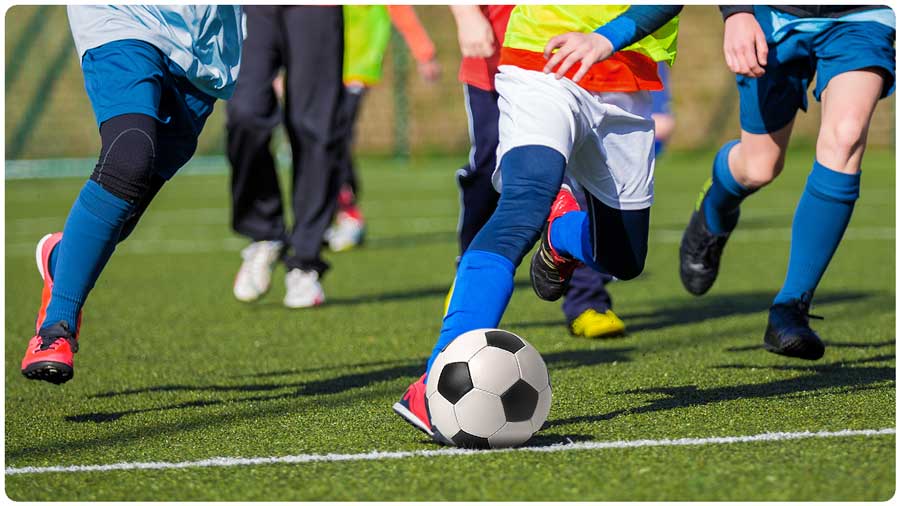Most people who have played soccer for any amount of time are comfortable kicking the ball with the inside of their dominant foot. Surprisingly, even some experienced players are far less comfortable with other foot skills, including volleying, kicking with the outside of their foot or using their non-dominant foot. Luckily, there are several things coaches can do to help their players become more comfortable with these skills.
Include Them in Warm-Ups
The surest way to get comfortable with unfamiliar skills is to practice them before you need them in a game. For many teams, passing the ball with a partner is part of the warm-up process. Have players use their non-dominant foot to pass the ball for a certain number of passes. Then have the players use the outside of their dominant foot to pass the ball to a partner. Players may also want to pass the ball with the outside of their non-dominant foot. While these skills may not come naturally at first, after a while, players will start using them more naturally in game situations.
Volleying the ball can also be included as part of players' warm-ups. Have players line up facing the goal. Throw the ball toward the first player in line, attempting to get the ball at the player's feet. Players should kick the ball into the goal before it bounces for a volley. Players can also practice half-volleys by kicking the ball in the air after it has bounced once. While even new players can practice kicking the ball with the outside of their foot and with their non-dominant foot, volleying is a more advanced soccer skill likely more appropriate for players who are more confident in their current soccer abilities.
World Cup
Many soccer players love playing World Cup, a training game in which players form teams of two or three people and each team tries to get the ball in the net without letting the other teams score. Use this fast-paced “play time” to have players practice their foot skills by designating how a goal must be scored in each round. For example, all goals in the first round might have to be scored as a volley or half-volley. The next round players have to use the outside of their foot. In the third round, goals only count when they are scored with the player's non-dominant foot.
Scrimmage
Scrimmages are another great place for players to practice using these foot skills. While there usually is less pressure than there would be in a real game, the setting is similar to a real match. To encourage players to score goals using something other than the inside of their dominant foot, award extra points for goals scored in other ways. When age-appropriate, headers may also be worth extra points.
Of course, there are many other drills to help players to become better at using the outside of their foot and their non-dominant foot. There are also drills to help players learn how to properly volley the ball. The key to having players use these skills in a game is to allow them to try the skills in practice, when the pressure to do them correctly is less intense.


